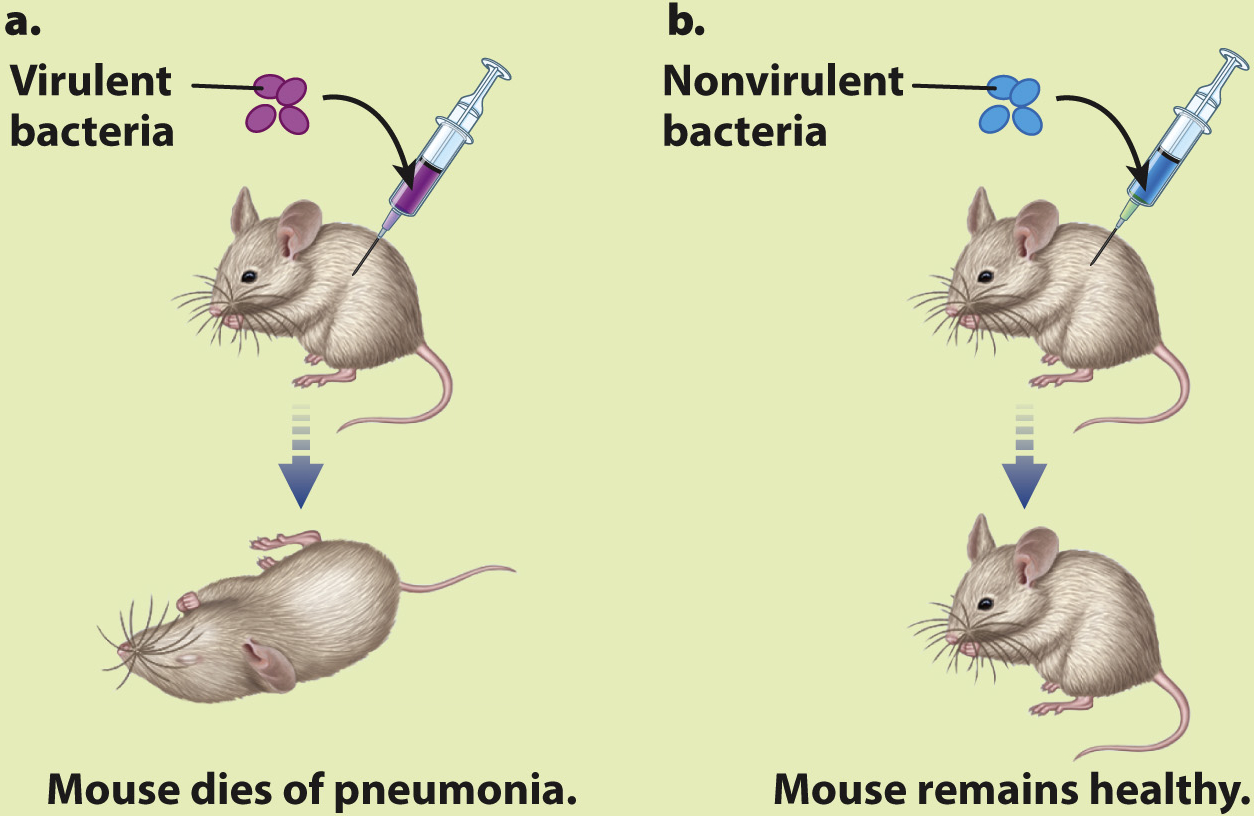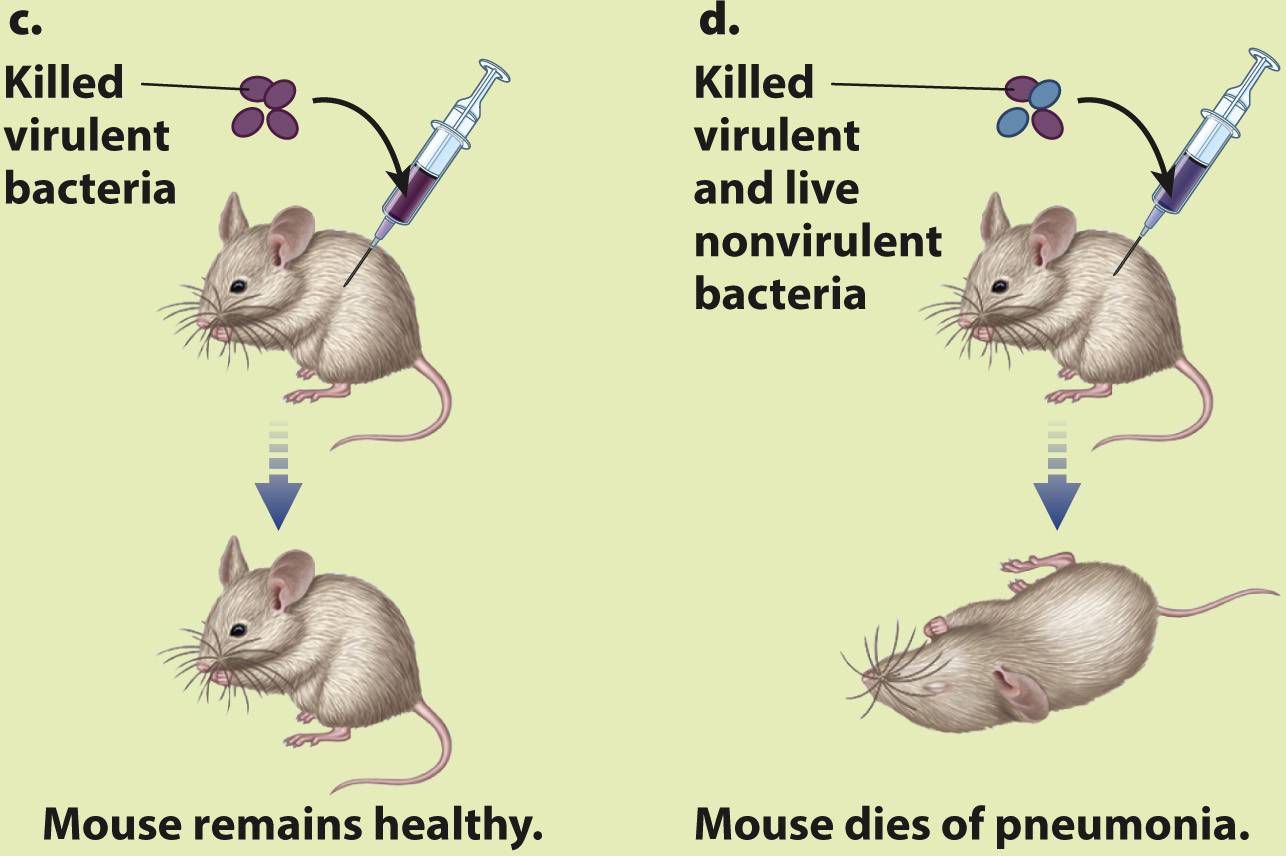HOW DO WE KNOW?
FIG. 3.1
What is the nature of the genetic material?
BACKGROUND In the 1920s, it was not clear what biological molecule carries genetic information. Fred Neufeld, a German microbiologist, identified several strains of the bacterium Streptococcus pneumoniae, one of which was virulent and caused death when injected into mice (Fig. 3.1a), and another which was nonvirulent and did not cause illness when injected into mice (Fig. 3.1b).

EXPERIMENT Frederick Griffith was also a microbiologist interested in bacterial virulence. He made a puzzling observation. He noted that nonvirulent bacteria do not cause mice to get sick (Fig. 3.1b) and virulent bacteria that had been killed do not cause mice to get sick (Fig. 3.1c), but when the two were mixed, the injected mice got sick and died (Fig. 3.1d). Furthermore, when he isolated bacteria from the dead mice, they had the appearance of the virulent strain, even though he had injected nonvirulent bacteria.
RESULTS

CONCLUSION One strain of bacteria (nonvirulent) can be transformed into another (virulent) by an unknown molecule from the virulent cells. In other words, the unknown molecule carries information that causes virulence.
FOLLOW-
SOURCE Griffith, F. 1928. “The Significance of Pneumococcal Types.” Journal of Hygiene 27:113–